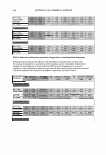406 JOURNAL OF COSMETIC SCIENCE PRINCIPLES OF EMULSION STABILIZATION WITH SPECIAL REFERENCE TO POLYMERIC SURFACTANTS Tharwat Tadros, Ph.D. Consultant: 89 Nash Grove Lane, Wokingham, Berkshire, RG40 4HE, UK tharwat@tadros. fsnet. co. uk This overview summarises the basic principles of emulsion stabilization, with special ref erence to polymeric surfactants. The main breakdown processes in emulsions are briefly described : (I) Creaming or sedimentation that is due to the gravity force . (ii) Flocculation that occurs due to van der Waals attraction, when there is not sufficient repulsion between the droplets. (iii) Ostwald ripening that arises from the higher solubility of the smaller droplets when compared to the larger ones. (iv) Coalescence that arises from the thinning and disruption of the liquid film between the droplets. (v) Phase inversion that may occur as a result of the increase in the volume fraction of the disperse phase or due to change in the conditions, e.g. increase of temperature. Many of these breakdown processes, e.g. flocculation, Ostwald ripening and coalescence can be overcome by the use of polymeric surfactants. Particular attention is given to two polymeric surfactants for stabilization of oil-in-water (0/W) and water-in-oil (W/0) emulsions. For 0/W emulsions, a hydrophobically modified inulin (RMI) was obtained by grafting several alkyl groups on the backbone of the inulin (polyfructose) chain. This is a graft copolymer AB0, where A is the stabilizing chain ( consisting of strongly hydrated linear polyfructose chain) and B is the "anchor" chain (that is strongly adsorbed at the 0/W interface or soluble in the oil droplets). For W/0 emulsions an A-B-A block copolymer consisting of oil soluble A chains ofpolyhydroxystearic acid (PHS) and B chain ofpoly(ethyleneoxide) (PEO), i.e. PHS-PEO-PHS, is the most suitable. The conformation of both polymeric surfactants at the 0/W interface is described. With HMI, the alkyl groups form "multi-point" anchors, leaving "loops" of polyfructose dangling in solution. This configuration produces enhanced steric stabilization. With PHS-PEO PHS, the PEO forms the "anchor" part (being soluble in the water droplets and the two PHS chains that are soluble in the oil form the stabilizing chains. A section is devoted to the interaction between emulsion droplets containing these adsorbed polymer surfactants. This interaction is referred to as steric stabilization and it is the combination of two main effects: (I) Unfavourable mixing of the A chains when these are in good solvent conditions this is referred to as the mixing interaction, Gmix• (ii) Loss of configurational entropy on significant overlap of the A chains this is referred to as the entropic or elastic interaction, Ge1- Combination of Gmix and Ge1 with the van der Waals interaction, GA gives the total energy distance curve for these sterically stabilized emulsions. This energy-distance curve shows only one shallow minimum at a distance of separation comparable to twice the adsorbed layer thickness, after which the total energy increases very sharply with further decrease of the separation distance. The main criteria for effective steric stabilization are summarized : (I) Complete coverage of the droplets by the adsorbed polymer. (ii) Strong "anchor" of the polymer chains to the droplet surfaces to prevent any displacement of the polymer on close approach. (iii) The A chains should
2004 ANNUAL SCIENTIFIC SEMINAR 407 remain in good solvent conditions under all conditions of storage. (iv) Reasonably thick adsorbed layers of the order of 5 - 10 run .. 0/W emulsions based on HMI were prepared and their stability in water and in electrolyte solutions was investigated using optical microscopy. Very stable emulsions were produced both at room temperature and 50°C. The reason for this high stability was attributed to the multipoint anchoring of the polymeric surfactant by several alkyl groups and the strong hydration of the polyfructose loops in water and high electrolyte concentrations and at high temperature. The hydration of the polyfructose chains was confrrmed by cloud point measurements in water and high electrolyte concentrations. W/0 emulsions prepared using PHS-PEO-PHS block copolymer could be prepared at high water volume :fraction( 0.6). These emulsions were fluid as confirmed by viscosity measurements. They also remained stable both at room temperature and 50°C. The last two sections in this overview are concerned with the problems of creaming or sedimentation and phase inversion. Creaming or sedimentation could be prevented by the use of"thickeners" in the continuous phase, e.g. hydroxethylcellulose or xanthan gum. These molecules produce non-Newtonian systems that will have a very high residual or zero shear viscosity. The latter which may exceed 1000 Pas could prevent any creaming or sedimentation of the emulsion. Syneresis of the emulsion could be prevented by control of the bulk (or elastic) modulus of the system. Phase inversion of 0/W emulsions could be prevented using HMI, since the polymeric surfactant is insoluble in the oil phase. As long as coalescence and Ostwald ripening are prevented the emulsion could remain stable for very long periods of time at room temperature and 50°C.
Purchased for the exclusive use of nofirst nolast (unknown) From: SCC Media Library & Resource Center (library.scconline.org)






































































































